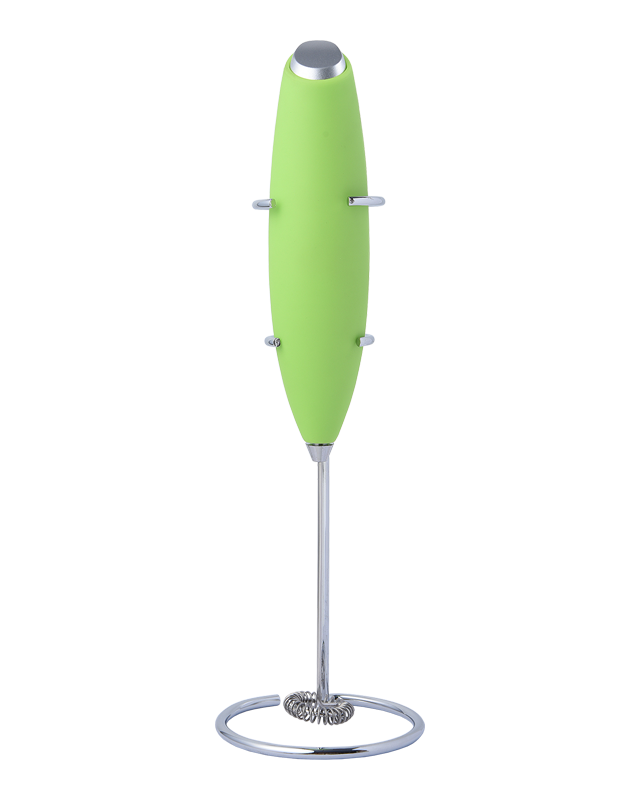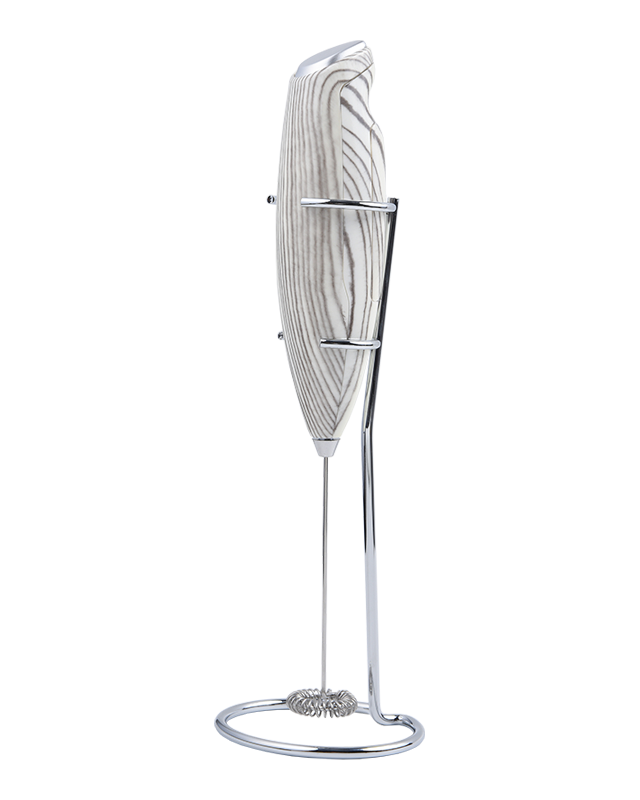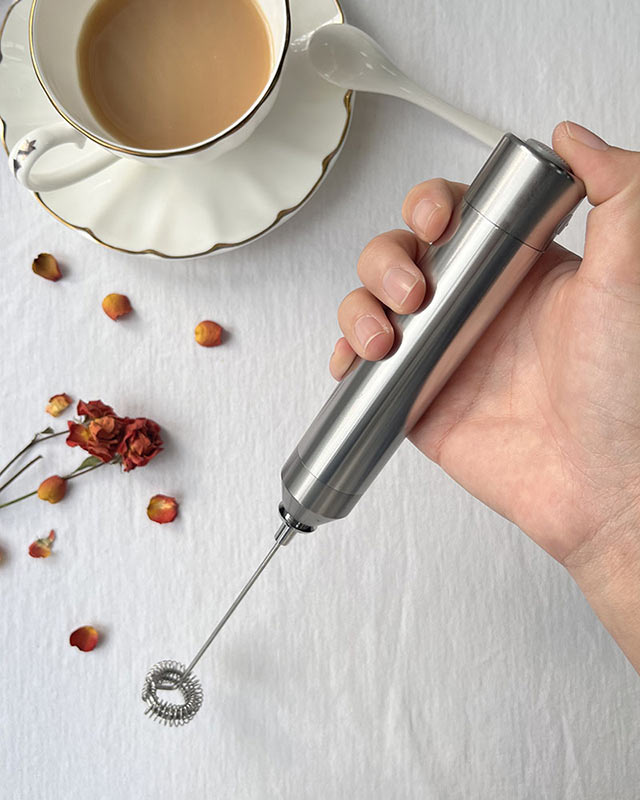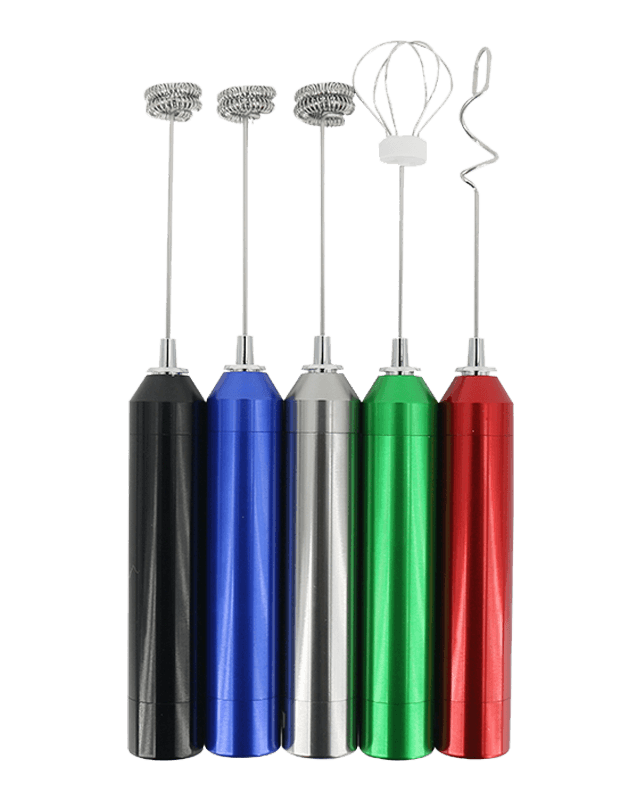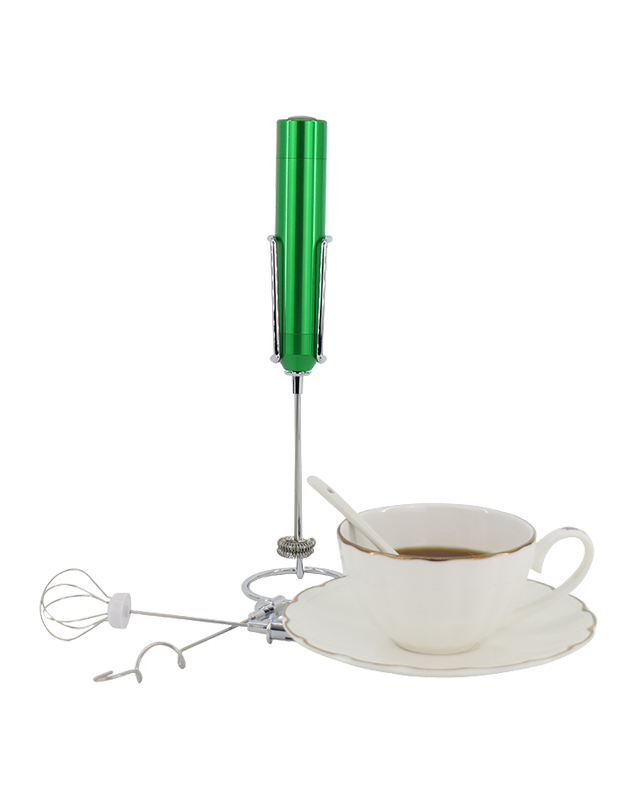1. Durable Construction and High-Quality Materials:
The Rechargeable Milk Frother is typically crafted from high-grade materials like stainless steel, food-grade plastic, and reinforced components that are built to withstand regular use without compromising performance. Stainless steel is commonly used for the whisk and internal components due to its resistance to corrosion and wear. This makes it ideal for ensuring the frother can handle constant exposure to milk and moisture without degrading over time. These materials are carefully selected to resist milk buildup, odors, or bacterial growth, helping the frother deliver clean, fresh froth each time. The robust build quality helps the frother maintain structural integrity and frosting efficiency, providing consistent, high-quality results for a long period, even after numerous uses.
2. High-Performance Motor for Reliable Operation:
The motor in the Rechargeable Milk Frother plays a central role in delivering a reliable frothing experience. Typically, high-end models use brushless motors because they offer greater efficiency, longer lifespan, and produce less frictional wear compared to brushed motors. Brushless motors are known for their ability to maintain consistent rotational speed and power output, which are essential for uniform frothing and stable foam creation. This ensures the frother works at optimal performance without the gradual loss of power that often occurs in cheaper models. The motor’s power rating is calibrated to provide the right balance of speed and torque for various milk types, ensuring that the frother can handle both dense foam for cappuccinos and smooth froth for lattes with the same level of efficiency.
3. Battery Life and Smart Charging System:
The battery life of the Rechargeable Milk Frother directly impacts its performance. Lithium-ion batteries are commonly used in these devices due to their long life cycle and ability to hold charge for extended periods. These batteries can withstand hundreds of charge cycles with minimal degradation. Lithium-ion batteries also charge faster and have a slower discharge rate, meaning that the frother can hold a charge for longer periods and still deliver optimal frothing results. Many frothers come equipped with smart charging systems that prevent overcharging by automatically cutting off the charge once the battery is full. This feature protects the battery from potential damage and ensures its longevity. To maintain the frother’s battery efficiency, avoid letting the battery drain completely before recharging it, as this can reduce the overall lifespan of the battery.
4. Frothing Mechanism for Consistent Results:
A key feature that helps the Rechargeable Milk Frother maintain consistency is its frothing mechanism. Whether the frother uses a dual whisk system, twin-rotating whisks, or a single powerful whisk, these mechanisms are designed to maximize air incorporation into the milk at a consistent rate. The whisks are carefully calibrated to rotate at a speed that is ideal for creating fine, even bubbles, which leads to uniform frothing. This ensures that no matter how many times the frother is used, the frothing results remain consistent. For different coffee drinks, such as cappuccinos, lattes, or macchiatos, the frother’s whisking mechanism ensures the desired consistency, from dense foam to smooth microfoam. The motor and whisk work in tandem to provide a reliable frothing experience, reducing any inconsistency or variation in the texture of the milk.
5. Maintenance Recommendations for Long-Term Performance:
Maintaining the Rechargeable Milk Frother requires attention to detail, especially in terms of cleanliness, battery care, and overall storage. By following a few simple steps, users can ensure that the frother continues to perform at its best for years:
a. Regular Cleaning:
After each use, it’s important to thoroughly clean the frother to remove any milk residue that might otherwise accumulate in the whisk or milk chamber. Milk can leave behind protein deposits and fatty residues that can affect the frothing process if not removed. After each use, detach the frothing whisk (if detachable) and clean it under warm soapy water. For non-detachable parts, a soft cloth or sponge should be used to wipe away any milk build-up. For better hygiene, rinse the entire frothing unit with water after each use to prevent the growth of bacteria or mold, especially around the whisk and milk compartment. Regular cleaning is essential to maintain the taste and texture of your froth, preventing any unpleasant flavors from forming.
b. Deep Cleaning for Mineral Deposits:
Periodically, the frother should be deep cleaned to remove mineral deposits or milk fat that regular cleaning might not entirely eliminate. This is especially important if you're using hard water. One effective way to deep clean the frother is by using a vinegar-water solution or a descaling agent. This helps break down any limescale or milk residue that can accumulate over time, particularly in the heating components. Deep cleaning should be done every 2–4 weeks or based on frequency of use. Always follow the manufacturer’s instructions for deep cleaning and ensure all parts are thoroughly rinsed afterward to prevent any lingering cleaning solution from affecting the milk's flavor.
c. Battery Maintenance:
For optimal battery life, it’s important to avoid overcharging the frother. Once fully charged, disconnect the device from the charger to prevent excessive charging cycles, which can degrade the battery's capacity over time. Ideally, charge the frother when it is around 20-30% battery life remaining rather than letting it fully deplete or overcharge. Storing the frother with a partially charged battery (around 50-70%) when not in use for extended periods helps preserve the battery's overall health.
d. Prevent Overuse on High Speed:
While high-speed settings are ideal for creating dense froth (such as for cappuccinos), excessive use of the high-speed setting may cause additional strain on the motor and components. The frother should ideally be used in short bursts and at appropriate speeds based on the type of milk frothing needed. Overuse on high-speed settings may lead to motor wear, resulting in slower performance or inconsistent frothing over time. For lighter froths or lattes, use a low-speed setting to maintain the motor's health and ensure longevity.
e. Proper Storage:
Store the Rechargeable Milk Frother in a cool, dry place away from direct heat or humidity. Moisture or exposure to extreme temperatures can damage both the motor and the battery. If the frother has detachable components, store them separately to avoid any risk of warping or damage. Dry the frother thoroughly before storing to prevent the growth of mold or bacteria, particularly in the whisk or milk chamber. Use a protective case or cover if available to avoid dust or accidental damage when not in use.
f. Inspection and Parts Replacement:
Regularly inspect the frother's key components, especially the whisk and motor, for signs of wear. Over time, the whisk may bend or lose its effectiveness, while the motor may show signs of reduced power or inconsistent frothing. If the frother no longer performs optimally, or if the frothing texture is no longer smooth, it may be time to replace the whisk attachment or seek professional maintenance. Many frother brands offer replacement parts, so checking for these options can help prolong the device’s use.



 English
English
 Français
Français
 Español
Español
 Deutsch
Deutsch
 日本語
日本語









